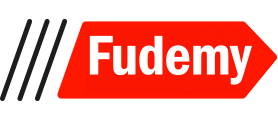What
You’ll Learn
You’ll Learn
- Learn how to build employee turnover predictive model using Random Forest
- Learn how to build employee performance predictive model using XGBoost
- Learn how to build promotion eligibility predictive model using LightGBM
- Learn how to analyze the impact of overtime work on turnover rate
- Learn how to analyze the relationship between work life balance and turnover rate
- Learn how to analyze the relationship between number of promotions and turnover rate
- Learn how to analyze the relationship between education level and employee performance
- Learn how to analyze the impact of remote work on employee performance
- Learn how to identify top performers in the company
- Learn the basic fundamentals of human resources analytics
- technical challenges and limitations in HR analytics
- and its use cases
- Learn how HR predictive modeling works. This section covers data collection
- preprocessing
- feature selection
- train test split
- model selection
- model training
- “Learn about factors that contribute to an employees performance and turnover rate
- such as job satisfaction
- work life balance
- compensation and benefits”
- Learn how to find and download HR dataset from Kaggle
- Learn how to clean dataset by removing missing values and duplicates
- Learn how to handle imbalanced dataset using Synthetic Minority Oversampling Technique and Adaptive Synthetic Sampling Approach
- Learn how to evaluate the accuracy and performance of the model by calculating precision score
- recall score
- and creating confusion matrix
Requirements
- No previous experience in HR analytics is required
- Basic knowledge in Python and machine learning
Description
Welcome to HR Analytics: Workforce Optimization with Machine Learning course. This is a comprehensive project based course where you will learn step by step on how to build predictive models for employee retention, performance assessment, and promotion eligibility using Random Forest, XGBoost, and LightGBM. This course is a perfect combination between machine learning and HR analytics, making it an ideal opportunity to level up your data science skills while improving your technical knowledge in human resource management. The course will be mainly focusing on three major aspects, the first one is data analysis where you will explore the HR dataset from various angles, the second one is predictive modeling where you will learn how to build HR predictive models using machine learning, and the third one is to evaluate the accuracy and performance of the model. In the introduction session, you will learn the basic fundamentals of human resources analytics, such as getting to know predictive modeling use cases in human resources, getting to know more about machine learning models that will be used, and you will also learn about technical challenges and limitations in HR analytics. Then, in the next section, you will learn how the HR predictive model works. This section will cover data collection, data preprocessing, feature selection, splitting the data into training and testing sets, model selection, model training, making predictions based on training data, and model evaluation. Afterward, you will also learn about several factors that contribute to an employee’s performance and turnover rate, for example like job satisfaction, work life balance, career development opportunities, working environment, benefits, and compensations. Once you have learnt all necessary knowledge about HR analytics, we will start the project. Firstly you will be guided step by step on how to set up Google Colab IDE. In addition to that, you will also learn how to find and download HR dataset from Kaggle. Once everything is ready, we will enter the first project section where you will explore the HR dataset from multiple angles, not only that, you will also visualize the data and try to identify trends or patterns in the data. In the second part, you will learn step by step on how to build employee retention predictive model, performance assessment predictive model, and promotion eligibility predictive model using Random Forest, XGBoost, and LightGBM. Meanwhile, in the third part, you will learn how to evaluate the accuracy and performance of the model using several methods like confusion matrix, precision, and recall. Lastly, at the end of the course, we will conduct testing to make sure that the HR predictive models have been fully functioning and generate accurate results.
First of all, before getting into the course, we need to ask ourselves this question: why should we build HR predictive models using machine learning? Well, here is my answer. In today’s dynamic workplace, HR professionals face complex challenges in managing employee performance, retention, and talent optimization. Traditional methods often fall short in addressing these complexities. Machine learning models and big data analytics can revolutionize HR practices by providing data-driven insights and helping you to make more informed decisions. By leveraging these technologies, HR professionals can optimize employee performance by identifying factors that contribute to high productivity and high job satisfaction. In addition, it can also help you to identify top performers in your company which will enable more effective talent management and career development plans. Lastly, you can also increase retention rates by understanding and addressing the root causes of employee turnover, and formulate evidence-based company policies that drive better outcomes. Mastering these skills not only empowers HR professionals to make more strategic decisions but also opens up numerous career opportunities in the growing field of HR analytics and data science.
Below are things that you can expect to learn from this course:
-
Learn the basic fundamentals of human resources analytics, technical challenges and limitations in HR analytics, and its use cases
-
Learn how HR predictive modeling works. This section will cover data collection, preprocessing, feature selection, train test split, model selection, model training, making prediction, and model evaluation
-
Learn about factors that contribute to an employee’s performance and turnover rate, such as job satisfaction, work life balance, career development opportunities, working environment, compensation and benefits.
-
Learn how to find and download HR dataset from Kaggle
-
Learn how to clean dataset by removing missing values and duplicates
-
Learn how to analyze the relationship between number of promotions and turnover rate
-
Learn how to analyze the relationship between work life balance and turnover rate
-
Learn how to analyze the impact of overtime work on turnover rate
-
Learn how to analyze the relationship between education level and employee performance
-
Learn how to analyze the impact of remote work on employee performance
-
Learn how to identify top performers in the company
-
Learn how to build employee turnover predictive model using Random Forest
-
Learn how to build employee performance predictive model using XGBoost
-
Learn how to build promotion eligibility predictive model using LightGBM
-
Learn how to handle imbalanced dataset using Synthetic Minority Oversampling Technique and Adaptive Synthetic Sampling Approach
-
Learn how to evaluate the accuracy and performance of the model by calculating precision score, recall score, and creating confusion matrix
Who this course is for:
- People who are interested in gaining valuable insights from HR analytics
- People who are interested in building HR predictive models using maching learning






